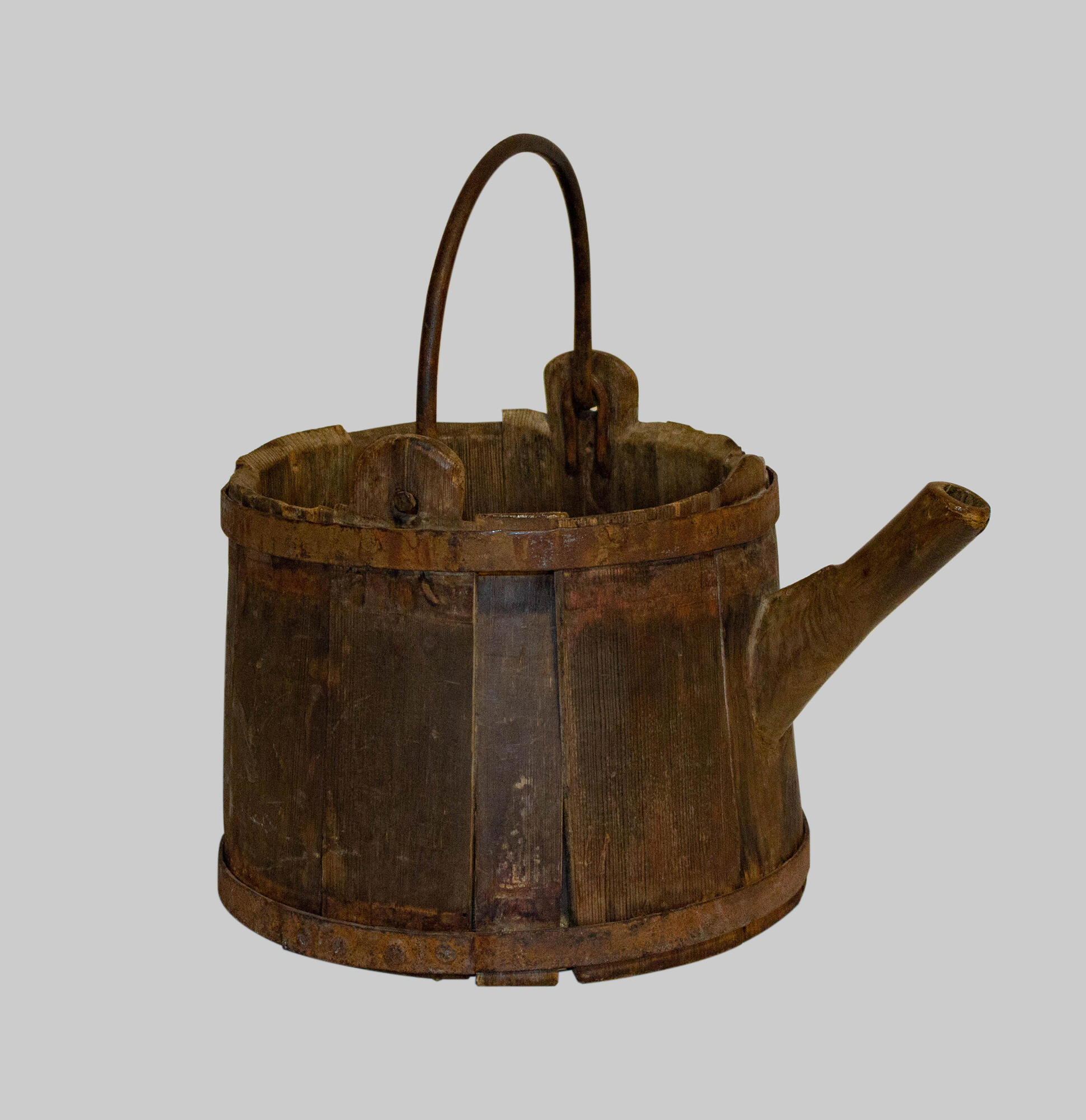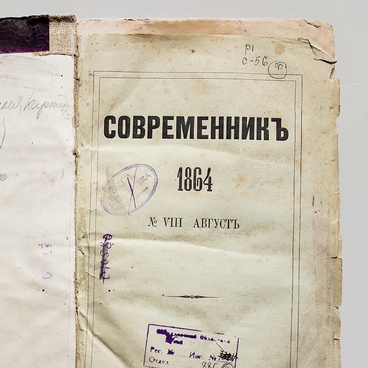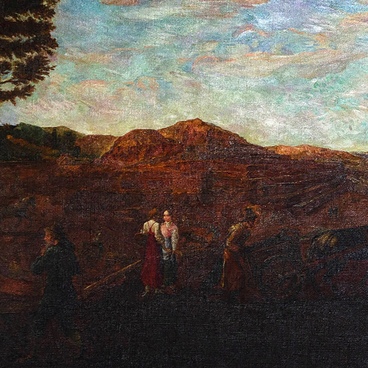Cooperage is the craft of making barrels and other vessels from wood. In the old days, people in different countries, including Russia, would usually pass down the secrets of the cooper’s craft from father to son. Every village or its surrounding area always had a cooper who made vessels to order. The exhibit on display is an example of the early 20th century cooperage.
In Russia, the milk bucket had many different names in different parts of the country: doynik, podoynitsa, doIlka, podoynik, doIlnik, podovnitsa, and podoyashka. All these words denoted the same object: a special milking vessel with a more or less long spout. Today, podOynik and podoynitsa are the most common names for a milk bucket.
The only difference between the milk bucket with a wide top and the usual cooper’s bucket were two special staves. One stave was cut from a whole piece of wood along with a spout, and the other along with a handle. The spout made it possible to carefully pour milk into a vessel with a narrow neck: a jug, a pot, or a jar. The long tubular spout, a siphon, also made it possible to simultaneously filter milk. The short spout was cut from a small protrusion that was left on purpose at the end of the stave. The tubular spout was cut together with a save from a section of a tree trunk that had a branch of a suitable size. It was easy to find a blank for such a stave among the wood waste. Gnarled trunk sections produced while making staves were usually used as firewood.
The handle at the bottom of the milk bucket was used to pour milk into another vessel. It made it possible to securely hold the milk bucket in any position. And the hands did not get tired. The cooper’s milk bucket was lightweight, easy to handle, and also kept milk fresh for a long time, since wood, especially cedar wood, contains elements that protect milk from spoiling.
Notably, the milk bucket also served as a barometer of sorts. Every milkmaid knew that if milk in the bucket started to foam, there would be rain. This belief is still very much alive in the modern village: cow owners know from experience that such a barometer is rarely wrong.
In Russia, the milk bucket had many different names in different parts of the country: doynik, podoynitsa, doIlka, podoynik, doIlnik, podovnitsa, and podoyashka. All these words denoted the same object: a special milking vessel with a more or less long spout. Today, podOynik and podoynitsa are the most common names for a milk bucket.
The only difference between the milk bucket with a wide top and the usual cooper’s bucket were two special staves. One stave was cut from a whole piece of wood along with a spout, and the other along with a handle. The spout made it possible to carefully pour milk into a vessel with a narrow neck: a jug, a pot, or a jar. The long tubular spout, a siphon, also made it possible to simultaneously filter milk. The short spout was cut from a small protrusion that was left on purpose at the end of the stave. The tubular spout was cut together with a save from a section of a tree trunk that had a branch of a suitable size. It was easy to find a blank for such a stave among the wood waste. Gnarled trunk sections produced while making staves were usually used as firewood.
The handle at the bottom of the milk bucket was used to pour milk into another vessel. It made it possible to securely hold the milk bucket in any position. And the hands did not get tired. The cooper’s milk bucket was lightweight, easy to handle, and also kept milk fresh for a long time, since wood, especially cedar wood, contains elements that protect milk from spoiling.
Notably, the milk bucket also served as a barometer of sorts. Every milkmaid knew that if milk in the bucket started to foam, there would be rain. This belief is still very much alive in the modern village: cow owners know from experience that such a barometer is rarely wrong.



